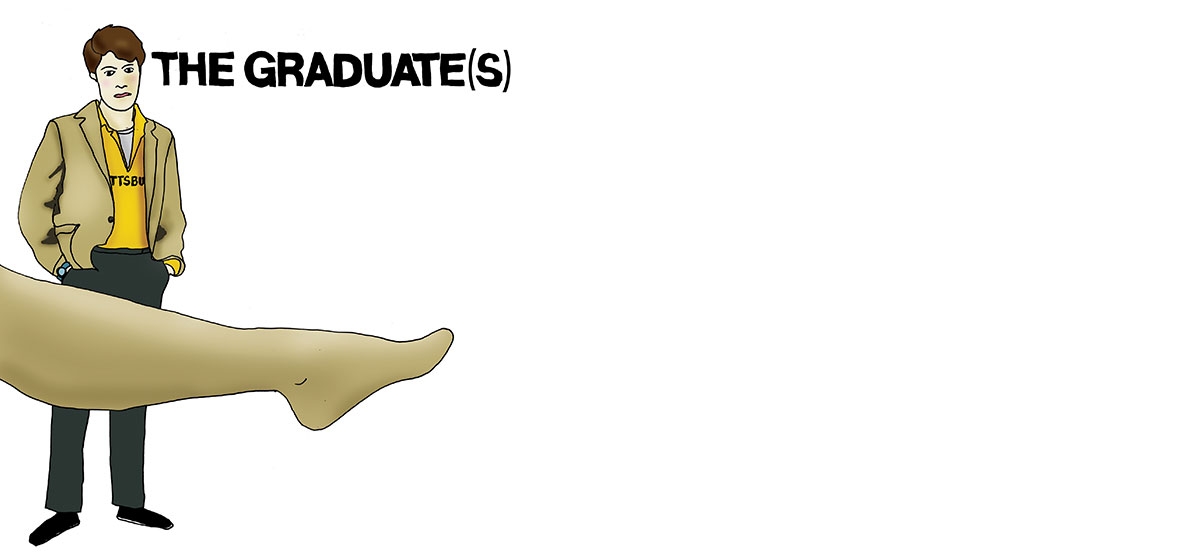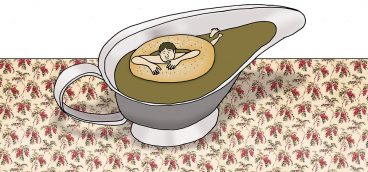
It seems that every autumn, I start worrying about my kids. My wife and I don’t have children, so “my kids” are my current and former college students.
Despite their bright-eyed optimism, I always worry about whether they’ll make it financially after graduation. It’s been an irrational fear because I had never researched the cost of living in Pittsburgh on an entry-level salary.
After reading Barbara Ehrenreich’s 2001 book Nickel and Dimed: On (Not) Getting By In America, I got more concerned. From 1998 to 2000, she became a sociological guinea pig, working unskilled jobs and seeing if she could survive on the pay. Around the country, she worked as a house cleaner, waitress, hotel maid and retail clerk. She couldn’t make it, and the daily ordeal sapped her will and the will of her coworkers, who wanted to improve their station but became too tired or discouraged.
Doing the math
In the summer of 1983, I entered the workforce as an assistant buyer at Kaufmanns, making $16,500 a year. My rent in Shadyside was $177 a month because I shared it with a college buddy. Taking the bus Downtown and buying a beer in Oakland cost a buck each. Movies were $2.50, and a box of generic mac and cheese cost a quarter.
After completing a little Excel spreadsheet, I quickly realized why I carried so much credit-card debt, while only making minimum monthly payments. I wouldn’t have made it except for the periodic “grants” from my parents.
I was pretty stupid back then. I never made a monthly budget. I drove into town more than I should have. I shopped for food once a day instead of once a week. I went out too much and bought too many clothes—sartorial splendor seemed a requirement in retailing.
So if I couldn’t make it back in the ’80s, how would my students do now? I decided to test the proposition. I surveyed a couple dozen former students and most were earning more than $50,000 a year, which seemed high to me.
CNNMoney.com says the average starting salaries for college graduates in 2007 ranged from just above $31,000 to just above $59,000. That’s comparable to my initial 1983 Kaufmann’s salary of $16,500, which would be $40,000 today, factoring in inflation. For my experiment, though, I decided to use the $50,000 figure which my students were making. After taxes, that would mean taking home $3,000 a month. Could I make it on that now?
Getting started
I searched the apartment listings in the local paper for my Austin Powers bachelor pad, focusing on one-bedroom units in Shadyside, Green Tree, Squirrel Hill or the South Side. I found nice rentals for an average of $600 a month plus electricity, but thought for my purposes I’d skimp and budget $550 a month.
I’d need to furnish my apartment and buy work clothes. For furniture I went to IKEA, getting prices online. For clothes, I shopped the Land’s End Web site, and prices were a pleasant surprise. A little more than $2,200 would get me a sofa, end tables, lamps, dinette and chairs, bed, mattress and linens, dresser, desk and chair, easy chair, iron and ironing board and a coffee pot.
Because I wouldn’t be going out a lot in order to save money, a television and DVD player would be a must, so I estimated I’d drop about $700 on those.
Companies now allow business casual these days instead of coat-and-tie in my day. So I priced one suit, five pairs of slacks, seven shirts, two pairs of shoes, a winter coat, a light jacket, two pairs of dress shoes, two ties, a briefcase and an umbrella. I also bought a lunch bag and thermos because I would brown-bag it most days. Total cost: $1,600. Business casual, it turns out, has its merits for the young professional.
Finally, I found a new Ford Focus at a local dealer with a monthly finance payment of $178 per month with a reasonable down payment.
So I was ready to rock-and-roll in Pittsburgh for a manageable $5,200 in start-up costs. I assumed that graduation gifts could cover half of that amount, so I would have about $2,600 of credit-card debt that I would try to pay off during the first year of employment.
Monthly expenses
For monthly expenses, I gathered costs for rent and electricity ($550), a bus pass ($75), Internet service ($19.99), cable ($33), cell phone ($39.99), car payment ($178), employer-required health-insurance contribution ($65), NetFlix ($4.99), dry cleaners ($100) and a membership to the YMCA ($60). I also assumed $220 per month in student loan payments, which is the national average. Starbucks would cost me $80 per month.
Because I would be taking the bus, I figured I’d need to fill up my little Ford Focus twice a month. Gas would cost me $130 a month.
Eating is also a good policy, so I visited Giant Eagle with a weekly shopping list for one. Eating at home would be essential. Before I went to the store, I estimated about $100 per week, and as luck would have it, my grocery bill was $101.63. So that’s $400 a month for food.
This generation is big on entertainment so I figured I could go to the movies, a club and out for dinner once a month. Once a year, I’d buy a ticket for the Steelers, Civic Light Opera and Pittsburgh Symphony. I’d buy two tickets apiece to the Pirates, Penguins and Pitt Basketball. And I’d buy an annual membership to the Carnegie. I also budgeted a case of beer a month. For the cheapest prices for all of the above, I could do it on $200 a month.
The tally
Now it’s time for the moment of truth. All of my start-up and monthly living expenses totaled approximately $2,500 per month. If I subtract $2,500 from my take-home pay of about $3,000, I am sitting in high cotton, correct?
Well, guess what I’m not doing?
Saving for the future. Few of us believe that Social Security benefits and pensions will take care of us. So as one of my heroes, Ben Stein says, “If you’re old enough to have sex, you’re old enough to start saving for retirement.”
Wallstreetfighter.com, estimates that “if you saved 15 percent of your pre-tax income for 35 years, that would put someone in their late ’20s at 80 percent of their annual income upon retirement.” The Web site warned that the 15 percent figure assumes that you get a 3 percent raise each year, inflation stays at 3 percent and your investments appreciate 10 percent a year, which is a stretch.
If I used those guidelines, I’d need to save $625 per month. Remember, I only have an extra $500 per month after expenses, so saving that much puts me $125 in the hole each month. If I reach my goal of paying off my credit card bill from my start-up expenses, I can get there in a year, but just barely.
Given that I’ll be paying about 18 percent a year in interest, my other option would be to pay off my credit card bill as fast as possible, which would take me about four months. Then I could start saving like crazy.
Our most livable city
My little exercise helps me worry a bit less about my students because Pittsburgh appears to be very livable for a young person making $50,000. It’s a breakeven proposition even at $42,000 per year. But in my mind, those are pretty high salaries for 22-year-olds, so I’m still going to worry.
And what will my message to my students be this fall? Pretty simple: Study hard, kids. There is no such thing as a free lunch. And the one you’ll pack will probably be bologna for a while.





